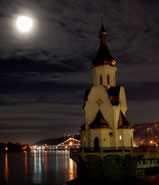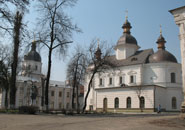Podol
In the middle of 13 century, The Upper City was completely destroyed by Batukhan, that is why for that period Podol became the main district of Kiev.
In centuries 15-16 craftsmen of Podol united in gilds – manufactures of potters, smiths, carpenters etc. Later, this quarter placed magistrate (city hall), Academy, Kiev Fraternity (socio-religious community). In 17 century building-up of Podol developed, and in the end of 18 century annual trade fairs gathering many people from over the country were held there.
At all times – from the ancient period till nowadays – Podol keeps the spirit of a quarter of simple people.Settled by craftsmen, merchants, and sailors in times of Kiev Rus, it was and still is an incarnation of democracy in Kiev. Podol is always famous for its loyalty to different faiths and religions. A great number of different communities – Polish, Greek, Armenian, Jewish, Tatar etc. – lived there long time ago as neighbors and prayed in different temples. Now, churches of various confessions can be seen in Podol as well. In the end of 15 century Podol has got a right to a self-administration – township. It’s right here, in Podol that first markets and fairs took place. Pharmacy, mill, aqueduct, electric station, high education, tram and funicular – all these things, being so close to a simple people, appeared for the first time in Podol.
Not once Podol was plundered by enemy tribes; it often suffered from flooding, because Dniepr was not the only river here – Pochaina and Glybochitsa as Dniepr’s feeders existed earlier but do not now.


